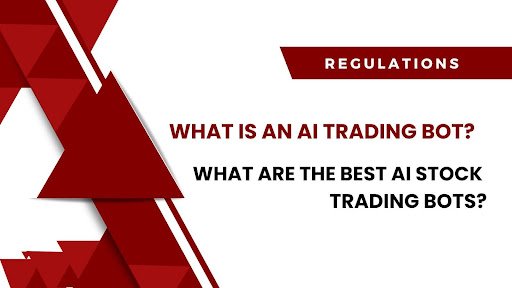Graph Neural Networks (GNNs) are transforming the artificial landscape. GNN is growing as an essential technology to analyze complex interconnected data. GNN is seen as an immensely rising research interest with a bibliometric study.
This highlights the remarkable increase of 447% on average in annual growth. This was published in a research paper that involved the GNNs between 2017 and 2019.
This makes “Graph Neural Network” one of the top thress keywords at leading AI conferences, including ICLR and NeurIPS year after year. This surge spotlights the growing impact of GNN.
Different leading companies, including Google, Uber, Alibaba, Pinterest, and Twitter, combine to use GNN approaches in their core products.
This helps their products perform more effectively. This approach provides recommendations regarding traffic prediction and drug discovery.
The inventiveness of GNNs is obvious in their widespread adoption in different fields. For instance, Google Maps has positioned GNN-powered models to improve the time of arrival of its EEAT prediction.
They achieved up to 50% greater accuracy than the previous methods. In weather forecasting, DeepMind’s GraphCast all built on GNN principles. They can generate the most accurate 10-day global forecasting within minutes.
This is a great achievement that previously required supercomputers. GNN is outperforming traditional AI architecture in both academic and real-world applications.
They are now the centre of technology for solving complex and challenging problems in data science and machine learning
From social networks to molecular structures, the GNN model is used to build relationships between entities to make it a must-have requirement in the modern AI era.
This blog will help you explore the GNN meaning, how GNN works, and architectures and frameworks, including Convolutional Networks (GCNN) and Graph Attention Networks.
What Is a Graph Neural Network (GNN)?
A GNN (Graph Neural Network) is a machine learning software that examines data and presents it in the form of graphs.
Unlike traditional neural networks, which worked with grid-like data using images or sequences. GNN model operates directly and learn from data where the relationship between entities is presented as graphs.
It’s a type of neural network that operates the graph-unstructured data. GNN uses deep learning and machine learning technologies to reach conclusions.
These are based on the entities, including the input graph, its nodes, and edges. GNN models handle nodes (entities) and edges (relationships) more effectively.
- The nodes on the graphs are vertical and represent the input data points.
- The edges are the lines between nodes that represent the connection between data points.
Graph neural networks can interpret by analyzing nodes and edges, and then present it to a graph to carry out problem-solving and predictions using interpretive analysis.
| A GNN is an optimizable transformation on all attributes of the graph, including (nodes, edges, global-context) that preserves graph symmetries (permutation invariances). |
Different sectors, industries, and online systems can apply decision-making. For instance, the patterns between edges and nodes can present connections between apparently diverse addresses.
GNN cannot only predict but can also find exceptions in the data points. This helps systems detect suspicious activities and other outliers in datasets.
A graph neural network presents a data structure with a specific approach. It can process, sort, store, and interpret data.
The specific data structure of GNN mirrors the definition of the character “Graph”.
Unlike a typical graph, it does not provide a graph in x and y axes, but the GNNs present the data in a data structure with nodes and edges.
How Does a GNN Model Work?
GNNs are machine learning (ML) systems. They work using graphs as input and extract information and data, and form conclusions based on the input.
The GNN model works on the approach of calculation and predictions based on graph theory.
The graph theory suggests various phenomena, including systems and networks, and they can be contextualized into graphs.
GNNs utilize graph theory and establish connections, and they can be directed or undirected.
This process allows every node to expand knowledge about its local area nd eventually the global graph structure. The working of the GNN model involves these steps.
Initialization
- Each node of the graph is tasked with the initial embedding (feature vector). It is often derived from its features and attributes.
- Edge features and global graph attributes can also be included.
passing of Messages
- For the number of iterations (layers), each note collects the information from its instant neighbor.
- At every iteration, K is embedded with the embedding h(k) u of node U and is updated by aggregating the embeddings of its neighbors N(u) and then combining them with its embedding from the previous iteration.
h(k+1) u = UPDATE(k) (h(k) u , AGGREGATE(k) ({h(k) v , 8v 2 N (u)})
Neighborhood Aggregation
- The function of Aggregation is to collect the information( message/data) from neighboring nodes. The update function combines it with the current node state to produce a new embedding.
- Both functions are often modeled with neural networks and are differentiable. This allows the end-to-end training.
Stacking Layers
- Multiple messages are passed in layers with stacks.
- The enabling nodes access the information from gradually larger neighbors (i.e., k-hop neighbors after k layers).
Readout/Pooling (Optional)
- For the classification of a graph, a readout or pooling operation presents the sum of node embeddings to a single graph-level embedding.
- The final node or edge embeddings are used directly for the classification or link prediction.
Prediction
The final embedding links to specific layers of prediction, including
- Node classification
- Edge prediction
- Graph classification
Components of a GNN
The GNN components include
| Components Of GNN | Description |
| Nodes | Nodes are different Entities in the graph, such as users in a social network. |
| Aggregation | Aggregation is the combination of neighboring information for a node. |
| Readout | This is producing a graph-level output, such as classification. |
| Edges | Edges are the Relationships between nodes, including friendships. |
| The Motivation Behind GNNs: Why graphs? The use of graphs is probably everywhere. They are used in Social networks (for users and their connections)They are used for Molecules (to represent atoms and chemical bonds)They are used in Transportation systems (mapping of cities and roads)They are used as Knowledge graphs (to represent entities and relationships) Traditional neural networks stumble with such data. These networks expect fixed and regular inputs. Graphs are irregular and have nodes that can vary with the number of neighbors, a nd their structure is highly dynamic. |
GNN Architectures
GNN model architectures have several unique strengths. The most dominant include
1. Graph Convolutional Neural Networks (GCNN)
- GCNN models are beyond the concept of complex forms of images to graphs. They summarize information from nodes’ neighbors to identify and learn more expressive representations.
- GCNN can deal with irregular data structures to make the ideal social network. This includes the molecular analysis and recommendation systems.
- They work with messages to pass between neighboring nodes to capture global and local patterns.
2. Graph Attention Networks (GAT)
- Graph attention networks work by presenting attention to the graph mechanisms. They allow models to consider the importance of different neighbors during summing up information.
- A GAT layer equipped with multi-head attention implicitly prioritizes certain neighbors over others. It does not need permission before accessing the full information in advance.
- This is a flexible network that makes graphs’ attention powerful, especially in heterogeneous graphs where not all connections are equally important.
Different Notable GNN Models
| Models | Description |
| GraphSAGE | It uses the Mean/Max/LSTM aggression methodIt is best for Inductive learning on large graphs |
| MoNet | It uses Gaussian Mixtures.It is best for flexible graph domains |
| GatedGCN | This model uses Edge-gated aggregation.This is best for Deep graph architectures |
Applications of Graph Neural Networks
The following subsections will cover graph neural networks’ applications. These are just five examples of limitless applications.
Graph neural networks can effectively analyze users, transactions, and accounts. To do so, a network of data is created for neural network graph analysis.
1. Fraud Prevention & Risk Analysis
GNN excels in analyzing complex relationships. This analysis can provide insights into the newly created accounts or the history of their involvement in any malicious activity.
GNN especially considers such accounts as suspicious by association. Even a single unusual detail, Such as a fingerprint, can be used to identify the suspicious user or activity.
If two users who appear unrelated and are using the same browser settings with a rare browser configuration, and are shipping to the same location, this can result in drawing a meaningful link.
For this, GNN uses predictions from the activity that is carried out by a malicious entity to keep a record for the future.
Such a system is known as link analysis and is flagged by the system based on suspicious activity and malicious networks.
2. Online Safety & Digital Safety
Online platforms have a range of connections and networks. GNN provides online safety on social media platforms.
GNN uses graph-based learning to understand the harmful content and bad actors that can harm a network. This is known as social media graph analysis.
This approach helps users to track the activity and monitor the spread of fake or misinformation. GNN analyzes the interaction patterns, followed by network shared content behavior.
3. Healthcare & Medicine
GNN can examine and analyze the patient’s data, including their age, gender, symptoms, and medical history.
This helps in identifying the patterns across similar patient groups and enables further instructions about diagnosis and treatment plans.
By analyzing all these instructions, professionals can make decisions considering all these factors
4. Image analysis through Computer Vision
Computer vision relies on identifying image patterns. Computer vision is a system based on artificial intelligence.
It allows computers to scan the images and classify them. After classification, the system concludes the results based on their categorization.
GNN improves the capabilities of computer vision by identifying patterns and exceptions in images and then finalizes the conclusions as a result.
One of the most important areas of image analysis includes cancer screening. In this area, X-rays can be analyzed for the exceptional tissues in the patient.
5. Navigation and Geolocation services
Navigation apps must juggle multiple factors, including traffic, roads, weather, and more. GNN improves the capacity of a geolocation software.
This includes the Google Maps and navigation applications to inform individuals of their ETA.
GNN model analyzes these dynamic elements as ending nodes and edges in the graph and provides precise predictions about traveling.
GNN provides smarter route planning and more responsive geolocation tools with accurate journey times.
Final Thoughts
Graph Neural Networks are evolving in different exciting developments. AI researchers and analysts have been paying more attention to this area over the last few years due to its extended use.
The applications of graph machine learning are remarkable in industries. Different domains are now using GNN to prove themselves as a game-changer in the large-scale production models.
It is a powerful tool for analyzing graphical data. Graph modeling is a way to analyze problems, and GNN can easily provide a study of generic graph models.
Suggested Read:
What Is The Hong Kong Monetary Authority HKMA, And What Are Its Key Functions?
What is CNAM (Caller ID Name)? A Complete Guide
What Is Ner In NLP? What Are The Best Tools In NLP and Top Frameworks













+ There are no comments
Add yours